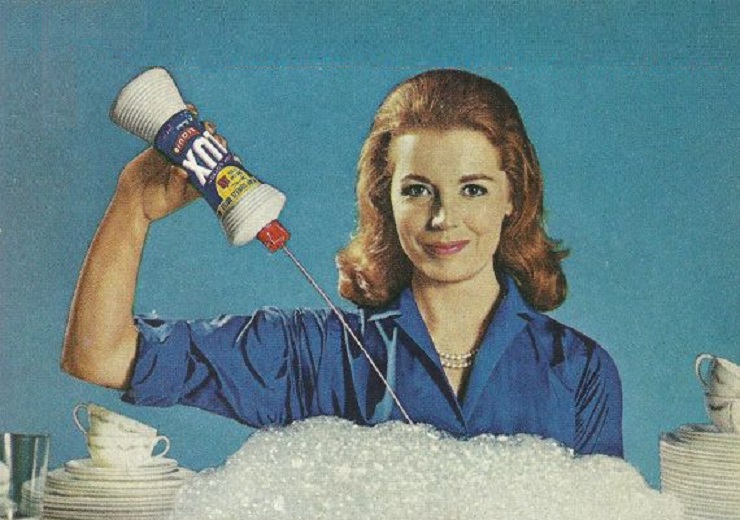One of the key reasons I’m always looking for ways to make daily humdrum chores more quick, easy and effective is because I’m inherently lazy. I don’t wanna spend any more time and energy than necessary doing stuff, especially if I’m just gonna have to do it all over again tomorrow. But I also want to produce the best possible outcome – I’m lazy and I have standards.
And, yeah, there’s a smattering of altruistic largesse involved in sharing what I find does the trick. But, maybe this is true of all bloggers, I’m also a bit of a bighead who craves recognition.
Anyway – dishwashing!
If you’ve been doing it by hand you’ve probably been doing it wrong!
Sorry – that came across a little “#3 will shock you!” Nah, it’s just something I’ve noticed most people do and it’s completely unnecessary.
What is it? What? What?! It’s… Suds.
Most of our dish-cleaning needs are probably handled by a machine, I know, but we still have to handwash from time to time – eg: that ‘charmingly rustic’ AirBnB.
And I’ll bet you anything that you don’t think you’re doing a proper job of cleaning those dishes unless there’s a mountain of froth in the sink.
But what are the suds actually doing? To the dishes – nothing of benefit. Their real effect is to your mind…
Detergent is wonderful stuff.
Can you imagine how hard it must have been cleaning greasy pots before it was invented? But it’s what’s IN the water not what’s ON the water that’s delivering the goods.
Oil and water don’t mix
Water needs to be able to reach a surface in order to clean it. Detergents contain surfactants, literally surface active agents, that reduce surface tension and let the water get in there.
These molecules have two ends; the hydrophobic (or water fearing) end and the hydrophilic (or water loving) end. The hydrophobic ends mixes with and traps the grime, while the hydrophilic ends are attracted to the water that whisks it away! Bingo – clean surface.
The bubbles that form are an effect of the water-lovin’ ends joining up but contribute nothing to the cleaning. It’s just a visible psychological reassurance that the detergent is… in the water, doing its job.
(Speaking of machines – does yours make bubbles with the powder you put in the wash? It doesn’t does it? That’s partly ‘cause you don’t need to see suds to know it’s working – plus it would probably explode)

Commercial manufacturers actually add chemicals in to specifically create bubbles – and their advertising has long reflected the belief of suds’ efficacy.

OK – so what should I do different, smarty-pants?
Simple. Just put all the water you need in the sink first (as hot as you can stand – heat helps!) – THEN squirt in the detergent. It’ll be just as effective and it’ll be easier to see when your dishes are thoroughly clean – with the bonus of being easier to rinse afterwards. Win-win.

Leave a Reply